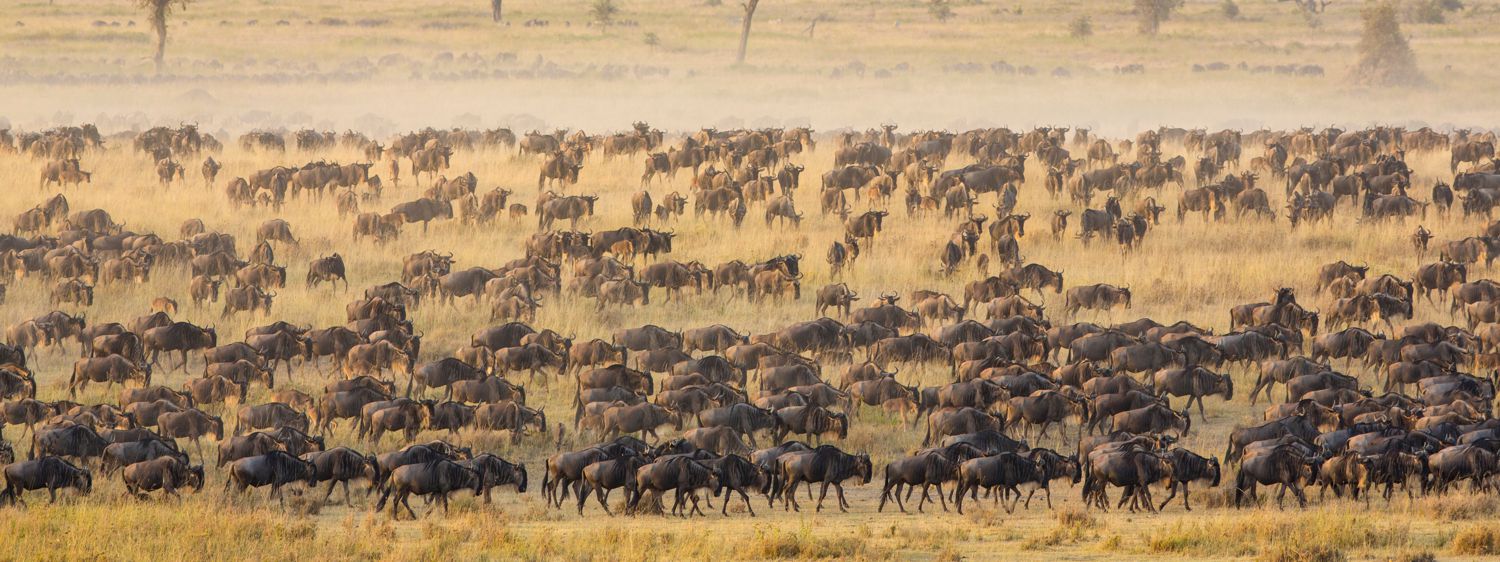The Blue Wildebeest (Connochaetes taurinus) is one of Africa’s most iconic and enduring wildlife species. Known for its dramatic role in the Great Migration and its presence across vast savanna landscapes, this antelope is a symbol of the continent’s untamed wilderness. With its distinctive appearance and remarkable survival strategies, the blue wildebeest plays a vital role in the ecosystems it inhabits.
Appearance and Physical Traits
The Blue Wildebeest, also referred to as the brindled gnu, is a large, powerfully built antelope with a broad chest, sloping shoulders, and strong limbs designed for long-distance travel. Its coat has a bluish-grey sheen, often streaked with dark vertical stripes along the flanks and shoulders. A shaggy mane, beard, and a pair of curved horns—present in both males and females—add to its rugged appearance. Males tend to have thicker, more robust horns than females.
Behaviour and Social Life
Highly social by nature, blue wildebeest live in large herds that can number in the thousands. These herds are constantly on the move, driven by the search for fresh grazing and water. One of their most fascinating behaviours is synchronized calving, where most females give birth within a short period, a strategy that helps protect newborns by overwhelming predators. The species is perhaps best known for its role in the Great Migration, a breathtaking annual journey across the Serengeti-Mara ecosystem. During this migration, over a million wildebeest, accompanied by zebras and gazelles, travel hundreds of kilometres, facing dangerous river crossings and predators in their relentless pursuit of greener pastures.
Habitat and Environment
Blue wildebeest thrive in open grasslands, savannas, and lightly wooded areas where short grasses provide ideal grazing. They are water-dependent animals and tend to remain close to water sources, often following seasonal rainfall patterns. Their preference for wide, open landscapes allows them to detect predators from a distance and move freely in large groups.
Geographic Distribution
These antelopes are widely distributed across eastern and southern Africa. They are especially abundant in Tanzania’s Serengeti and Kenya’s Maasai Mara, where their migration is one of the most spectacular wildlife events on the planet. Beyond these regions, blue wildebeest are also found in the plains of Botswana, Namibia, Zambia, and South Africa, particularly within national parks and protected reserves where their natural behaviours can be observed in full.
Conservation Status
Currently, the blue wildebeest is classified as a species of Least Concern by the International Union for Conservation of Nature (IUCN). Its large population and wide distribution contribute to its stable status, although habitat loss and human encroachment remain ongoing challenges in some areas. Continued conservation efforts are essential to ensure that this remarkable species continues to thrive in the wild.



